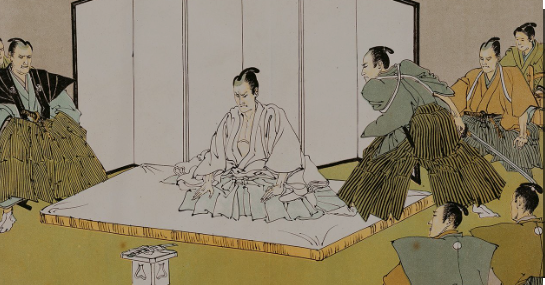Seppuku: The Ancient Japanese Ritual and Its Historical Significance

Introduction
Seppuku, a term that evokes images of ancient Japan, samurai honor, and a deeply rooted cultural practice. But what exactly is seppuku? Who were the notable figures that committed this act, and does it still exist in modern times? This article delves deep into the history, significance, and rituals surrounding seppuku, shedding light on its nuances and answering some commonly asked questions.
Also Read:- Unraveling the World of Fictional Characters: From Definitions to Favorites
What is Seppuku?
Seppuku, often referred to as “harakiri” in the West, is a form of ritual suicide by disembowelment. Originating in Japan, it was primarily associated with the samurai, the warrior class, who would use it as a means to restore honor to themselves or their families after committing grave errors or being captured by enemies. The act was seen as a way to take responsibility for one’s actions and to die with dignity.
Historical Figures Who Committed Seppuku
Over the centuries, many notable figures have chosen the path of seppuku. Some of the most renowned include:
- General Akashi Gidayu – After failing to capture a castle in 1582, he chose to end his life rather than face the shame of defeat.
- Oda Nobunaga – One of Japan’s great unifiers, he was forced to commit seppuku during the Honnō-ji Incident when his general, Akechi Mitsuhide, betrayed him.
- Saigō Takamori – Known as the “last true samurai,” he committed seppuku after the Satsuma Rebellion in 1877.
When was Seppuku Practiced, and Does It Still Exist?
The practice of seppuku dates back to the 12th century and became more formalized during the Edo period (1603-1868). During this time, it was not only a personal choice but could also be used as a form of capital punishment. Samurai who had disgraced themselves or committed crimes might be ordered to perform seppuku rather than face a more “dishonorable” form of execution.
In modern times, the act of seppuku is no longer practiced as it once was. The Meiji government officially abolished it in the late 19th century. However, the cultural concept of taking responsibility for one’s actions and the importance of honor still resonate in Japanese society. While the physical act might be a thing of the past, its symbolic significance remains.
The Seppuku Ritual
The ritual of seppuku was a solemn and highly ceremonial process. It wasn’t a mere act of suicide but a ritualized performance, often witnessed by several people. Here’s a brief overview:
- Preparation – The person committing seppuku would be dressed in white robes, symbolizing purity. A special location, often serene and peaceful, would be chosen for the act.
- Writing a Death Poem – Before the act, the individual would often pen a “jisei,” or death poem, expressing their final thoughts or reflections on life and death.
- The Act – Using a short blade or dagger, the individual would make a deep, left-to-right cut across the abdomen. A second cut might be made vertically. This act was excruciating and symbolized the release of the person’s spirit.
- The Kaishakunin – To reduce the suffering, a “kaishakunin” (a second person) would stand by to decapitate the individual once the cuts were made, ensuring a swift death.
Did Women Commit Seppuku?
While seppuku is primarily associated with male samurai, women also had their own form of ritual suicide known as “jigai.” Instead of the abdomen, women would cut their throats using a special knife. This method was chosen to ensure a quick death and to prevent the face from becoming contorted in pain, preserving the woman’s beauty in death. Jigai was often committed by samurai women to avoid capture or dishonor, especially during times of war.
Conclusion
Seppuku, with its deep roots in Japanese history and culture, offers a window into the values and beliefs of ancient Japan. While the act itself is no longer practiced, its legacy as a symbol of honor, responsibility, and dignity persists. Through understanding seppuku, we gain insight into the complexities of human nature, the weight of honor, and the lengths to which individuals will go to preserve their integrity.
Note: This article provides an overview of seppuku and its significance. For a deeper understanding, readers are encouraged to explore primary sources and scholarly works on the subject.
Frequently Asked Questions (FAQs) about Seppuku
1. What is the difference between seppuku and harakiri?
Answer: Both terms refer to the same ritualistic suicide by disembowelment practiced by samurai. “Seppuku” is the more formal term, while “harakiri” is a colloquial expression. “Hara” means belly, and “kiri” means to cut, so “harakiri” directly translates to “belly cutting.”
2. Why was seppuku considered honorable?
Answer: In samurai culture, honor was of utmost importance. Seppuku was seen as a way for a samurai to take responsibility for his actions, atone for mistakes, or avoid falling into enemy hands. By choosing to end their life in a controlled and dignified manner, they could restore honor to themselves and their family.
3. Was seppuku voluntary?
Answer: While many samurai chose to commit seppuku voluntarily to restore honor, there were instances where it was imposed as a form of capital punishment. In such cases, a samurai might be ordered to perform seppuku rather than face a more “dishonorable” form of execution.
4. What is a “jisei” or death poem?
Answer: A “jisei” is a death poem written by the individual committing seppuku. It serves as their final reflection on life, death, and the reasons for their decision. The poem is often poignant and provides insight into the individual’s state of mind.







